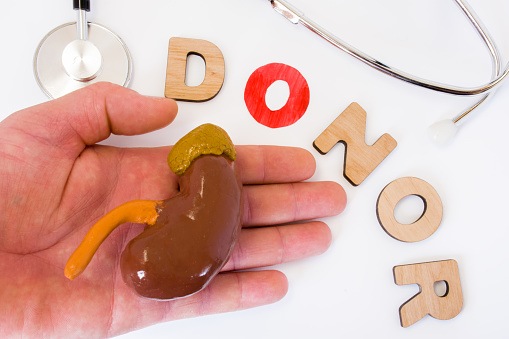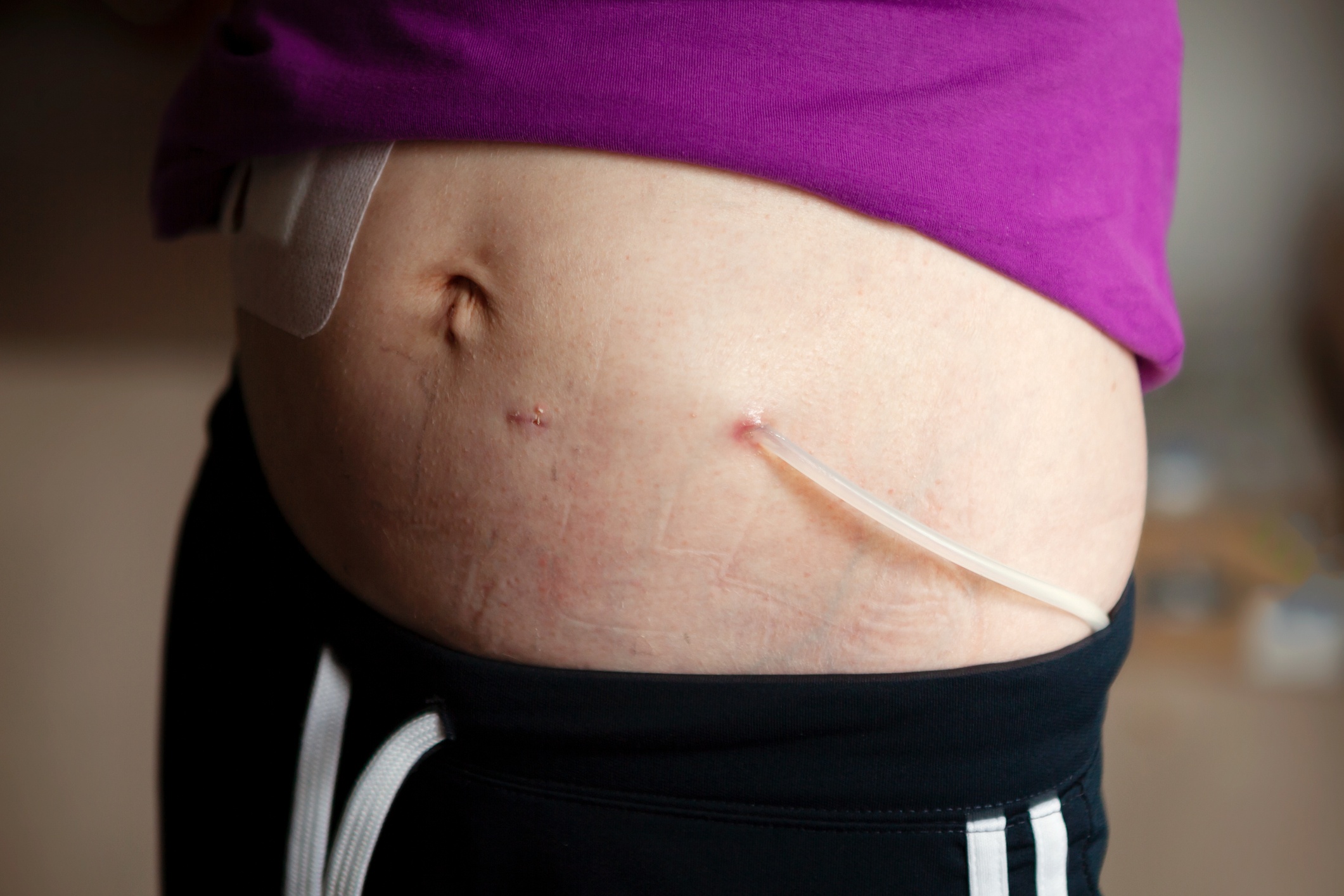
A key component in the evaluation of live kidney donor candidates is the risk factor of subsequent kidney failure in the candidate. At present, standard donor evaluation relies on exclusion of candidates at high risk for end-stage renal disease (ESRD) based on clinical risk factors that include hyperglycemia, high blood pressure, and proteinuria.
Previous studies designed to characterize risk for ESRD in related donors had limitations such as limited follow-up and limited statistical power that allowed for only a single estimate of ESRD risk for related versus unrelated donors (1.7-fold greater risk for related donors). However, according to Abimereki D. Muzaale, MD, MPH, and colleagues, a single risk estimate does not account for the substantial variation in risk by ancestry or the potential gradient of risk within more closely related donors.
The researchers recently conducted a retrospective cohort study designed to better quantify risk for ESRD among donors biologically related to the recipient. The study utilized national registry data from the United States to examine the risk along the gradients of biological relationships between donor and recipient. Results of the study were reported in the American Journal of Kidney Diseases [2020;75(3):333-341].
National dialysis and transplantation registries were linked to donors’ records to determine ESRD in the study cohort. The study included all adult live donors between October 1, 1987, and December 31, 2017, including adults who donated to children. ESRD outcomes were ascertained by linkage of the Scientific Registry of Transplant Recipients database to Centers for Medicare & Medicaid Services medical evidence form 2728.
The outcome of interest was development of ESRD, defined as the initiation of maintenance dialysis or receipt of a living or deceased donor kidney transplant. Time zero for all donors was the date of the donation. Death prior to ESRD was a competing event. The 20-year risk for ESRD was estimated using cumulative incidence functions, with a time scale of years since time zero.
Of 143,750 live kidney donors, median age at donation was 40 years, 59% were female, 71% were white, 12% were Hispanic, 12% were black, and 3% were Asian. At baseline, none of the donors had diabetes, but 2% had hypertension. Median estimated glomerular filtration rate was 97 mL/min/1.73 m2, mean systolic/diastolic blood pressure was 121/74 mm Hg, median body mass index was 27 kg/m2, 25% had a history of smoking, 26% had a college degree, and 11% had postgraduate education. Overall, 35% were unrelated to the recipient (including 11% who were spousal relations), 8% were half-sibling or other biological relatives, 13% were parents, 16% were offspring, 29% were full siblings, and 0.2% were identical twins. There were variations in those characteristics by race.
There were also variations in the relative frequency of recipient causes of kidney failure by race. Among white donors, the most frequent cause of kidney failure was glomerulonephritis (GN) (30%), followed by diabetes (21%) and hypertension (12%) and cystic kidney disease (12%). Among black donors, the three most common recipient causes of kidney failure were hypertension (32%), GN (30%), and diabetes (21%). For Hispanic donors, the recipient causes of kidney failure were GN (32%), diabetes (23%), and hypertension (19%). For Asian donors, the recipient causes of kidney failure were GN (42%), hypertension (18%), and diabetes (17%).
Median follow-up of donors was 12 years, a total of 1,824,825 person-years. During the follow-up period, 407 donors developed ESRD. The researchers estimated the incidence of ESRD by race and donor-recipient biological relationship.
For Asian donors, the 20-year risk of ESRD (per 10,000 donors) was 10 (95% confidence interval [CI], 1-70) for full siblings; 32 (95% CI, 4-222) for offspring; 0 for parents; 0 for half-sibling/other biological relatives; and 0 for biologically related donors. For black donors, the risk was 170 (95% CI, 126-230) for full siblings; 130 (95% CI, 86-195) for offspring; 83 (95% CI, 42-164) for parents; 62 (95% CI, 27-144) for half-sibling/other biological relatives; and 30 (95% CI, 10-95) for biologically unrelated donors.
For Hispanic donors, the 20-year risk of ESRD per 10,000 donors was 35 (95% CI, 19-64) for full siblings; 35 (95% CI, 12-100) for offspring; 39 (95% CI 17-91) for parents; 52 (95% CI, 17-165) for half-sibling/other biological relatives; and 22 (95% CI, 6-79) for biologically unrelated donors. For white donors, the risk was 35 (95% CI, 27-46) for full siblings; 23 (95% CI, 12-44) for offspring; 53 (95% CI, 38-72) for parents; 22 (95% CI, 8-58) for half-sibling/other biological relatives; and 25 (95% CIO, 14-144) for biologically unrelated donors.
Following adjustment for age and sex, the odds ratio risk for ESRD varied by orders of magnitude across race. For Asian donors, the risks compared with unrelated donors were elevated 259.4-fold for identical twins, 4.7-fold for full siblings, 3.5-fold for offspring, 1.0-fold for parents, and 1.0-fold for half-sibling or other biological relatives. For black donors, the risks compared with unrelated donors were 22.5-fold for identical twins, 4.1-fold for full siblings, 2.7-fold for offspring, 3.0-fold for parents, and 1.3-fold for half sibling or other biological relatives.
For Hispanic donors, the risks compared with unrelated donors were undefined for identical twins, elevated 1.4-fold for full siblings, 1.5-fold for offspring, 1.5-fold for parents, and 1.0-fold for biologically unrelated donors. For white donors, the 20-year risks compared with unrelated donors were elevated 3.5-fold for identical twins, 2.0-fold for full siblings, 1.4-fold for offspring, 2.9-fold for parents, and 0.8-fold for half sibling or other biological relatives.
There were some limitations to the study, including the lack of information on family members other than the recipient; the lack of sufficient statistical power to investigate the risk in various racial and ethnic groups; the registry-based observational design of the study; the inability to adjust for confounders other than age and sex; and not examining nonbiological factors such as psycho-social factors, income, education level, and environment that may contribute to the risk for ESRD.
“In conclusion,” the researchers said, “substantial variations in risks for ESRD were observed across race and donor-recipient relationship. Whether counseling and screening guidelines for donor candidates should reflect these race- and relationship-specific risks is debatable. However, our findings point to signals that warrant further validation with more robust data.”
Takeaway Points
- Researchers conducted a retrospective cohort study to quantify the risk for end-stage renal disease (ESRD) among living kidney donors biologically related to the recipient of a kidney transplant.
- The risks for ESRD varied by orders of magnitude across donor-recipient categories.
- There were marked differences across types of donor-recipient relationships for Asian, black, Hispanic, and white donors.







 © 2025 Mashup Media, LLC, a Formedics Property. All Rights Reserved.
© 2025 Mashup Media, LLC, a Formedics Property. All Rights Reserved.